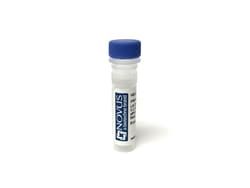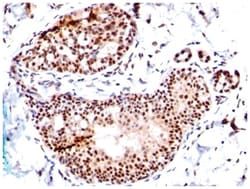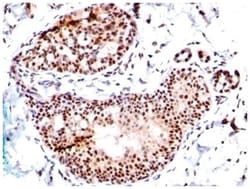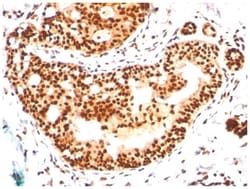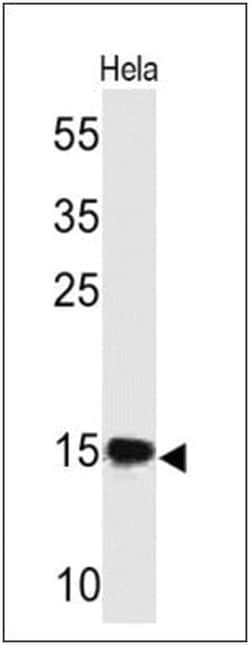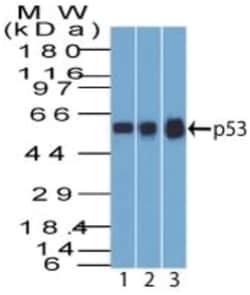SUMO2 Antibody (SUMO2/1199) - Azide and BSA Free, Novus Biologicals™
Mouse Monoclonal Antibody
Manufacturer: Fischer Scientific
The price for this product is unavailable. Please request a quote
Antigen
SUMO2
Concentration
1.0 mg/mL
Applications
Flow Cytometry, Immunohistochemistry (Paraffin), Immunofluorescence, CyTOF
Conjugate
Unconjugated
Host Species
Mouse
Target Species
Human, Rat
Gene Alias
HSMT3, MGC117191, sentrin 2, Sentrin-2, small ubiquitin-like modifier 2, small ubiquitin-related modifier 2, SMT3 (suppressor of mif two 3, yeast) homolog 2, SMT3 homolog 2, SMT3 suppressor of mif two 3 homolog 2 (S. cerevisiae), SMT3 suppressor of mif two 3 homolog 2 (yeast), SMT3A, SMT3B, SMT3H2, SUMO-2, SUMO3, SUMO-3, Ubiquitin-like protein SMT3A, ubiquitin-like protein SMT3B
Gene Symbols
SUMO2
Isotype
IgG1 κ
Purification Method
Protein A or G purified
Test Specificity
The small ubiquitin-related modifier (SUMO) proteins, which include SUMO-1, 2 and 3, belong to the ubiquitin-like protein family. Like ubiquitin, the SUMO proteins are synthesized as precursor proteins that undergo processing before conjugation to target proteins. Also, both utilize the E1, E2 and E3 cascade enzymes for conjugation. However, SUMO and ubiquitin differ with respect to targeting. Ubiquitination predominantly targets proteins for degradation, whereas sumoylation targets proteins to a variety of cellular processing, including nuclear transport, transcriptional regulation, apoptosis and protein stability. The unconjugated SUMO-1, 2 and 3 proteins localize to the nuclear membrane, nuclear bodies and cytoplasm, respectively. SUMO-1 utilizes Ubc9 for conjugation to several target proteins, which include MDM2, p53, PML and RanGap1. SUMO-2 and 3 contribute to a greater percentage of protein modification than does SUMO-1 and unlike SUMO-1, they can form polymeric chains. In addition, SUMO-3 regulates beta-Amyloid generation and may be critical in the onset or progression of Alzheimer s disease.
Clone
SUMO2/1199
Dilution
Flow Cytometry : 0.5 - 1 ug/million cells in 0.1 ml, Immunohistochemistry-Paraffin : 0.5 - 1.0 ug/ml, Immunofluorescence : 0.5 - 1.0 ug/ml, CyTOF-ready
Classification
Monoclonal
Form
Purified
Regulatory Status
RUO
Formulation
PBS with No Preservative
Gene ID (Entrez)
6613
Immunogen
Recombinant human SUMO2 protein
Primary or Secondary
Primary
Content And Storage
Store at 4C short term. Aliquot and store at -20C long term. Avoid freeze-thaw cycles.
Molecular Weight of Antigen
12 kDa
Description
- SUMO2 Monoclonal specifically detects SUMO2 in Human, Rat samples
- It is validated for Flow Cytometry, Immunohistochemistry, Immunocytochemistry/Immunofluorescence, Immunohistochemistry-Paraffin, Immunofluorescence, CyTOF-ready.
